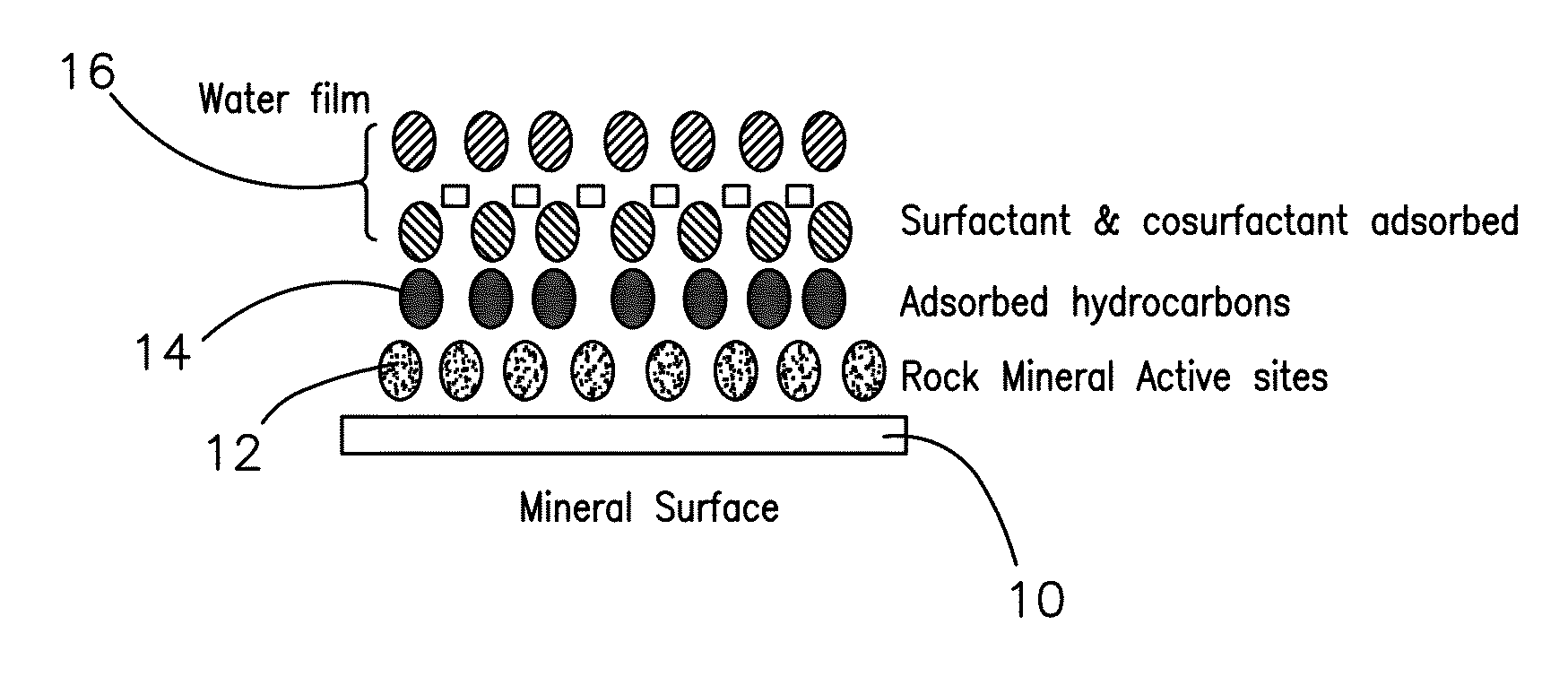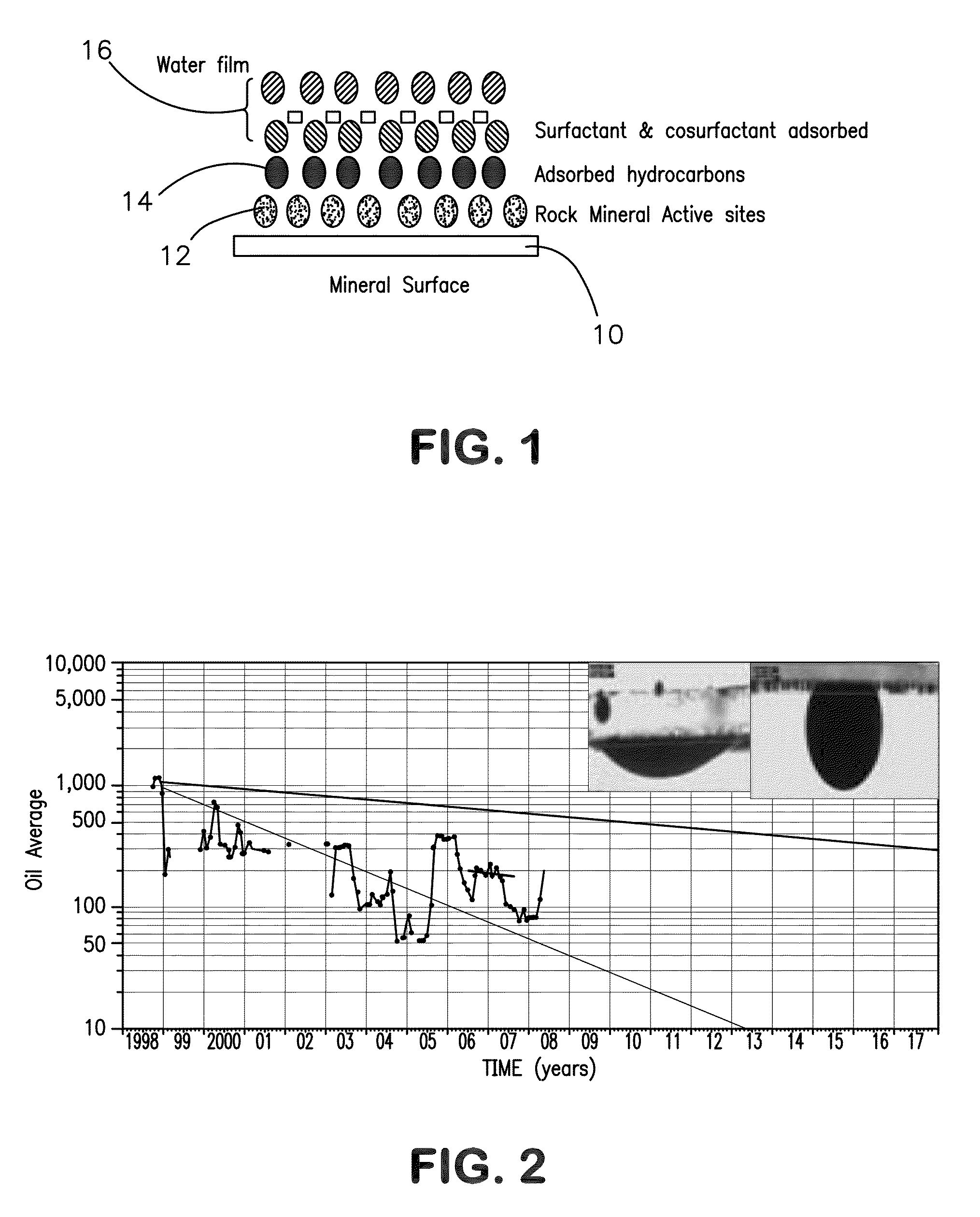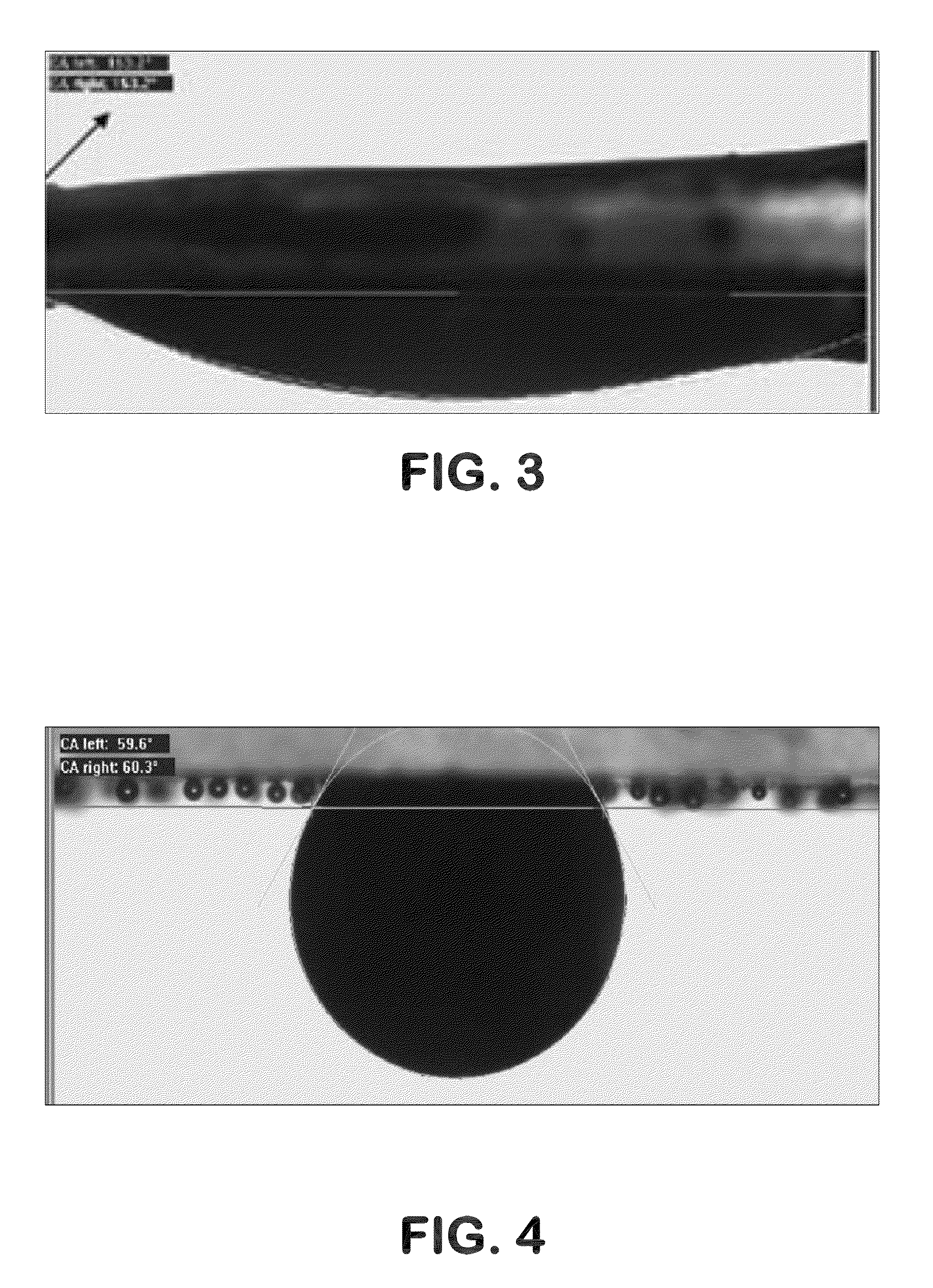Formulation and method of use for exploitation and transport of heavy and extra heavy oil wells
a technology of oil wells and forms, applied in the direction of fluid removal, chemistry apparatus and processes, borehole/well accessories, etc., can solve the problems of reducing oil production to nil, and achieve the effects of low well productivity, low recovery of original oil in place, and high drag flow pressure loss
- Summary
- Abstract
- Description
- Claims
- Application Information
AI Technical Summary
Benefits of technology
Problems solved by technology
Method used
Image
Examples
example 1
[0077]Crude oil and water from several wells in different areas of the Orinoco River Belt fields were collected. The oil and water were placed in closed glass vessels at several oil and water saturations, at reservoir conditions of water salinity and temperature, in a thermally controlled oven. Inside each vessel was placed a small glass plate which was monitored for wettability conditions starting with a water-wet condition and further being naturally changed to oil wet after a medium time period of about three to four weeks at reservoir temperature of 145° F. For each glass plate, wettability was measured by contact angle measurement techniques at the well temperature ranging from water-wet at the initial condition to oil wet after three weeks of aging process in the vessels at reservoir conditions.
[0078]After this treatment, the glass plates had a contact angle with oil which shows a strongly oil-wet condition as can be seen in FIG. 3, which shows the oil spreading over the plate...
example 2
[0084]A laboratory test was conducted for evaluating relative permeability with extra heavy crude oil and formation water and INTESURF™ 3PW0.5 solution prepared according to the invention with production water from the Cabrutica field of the Junin Division of the Orinoco River Belt Basin in Venezuela, and using a core of well E20P15 and formation fluids of well DE 22 12 of the same field.
[0085]The core from a depth of 2212.2 feet from Cabrutica field was taken, and two samples were packed for use in a confined cell, one sample for return permeability testing and the other sample for relative permeability testing of extra heavy oil and formation water and extra heavy oil and INTESURF 3PW0.5 solution. The samples were cleaned, restored and aged for 16 days at the reservoir temperature of 120° F. and pressure of 400 psi in a confined cell. An imbibition Amott test was performed to both samples to insure an oil wet condition of the sample before the tests. The core properties for two sa...
example 3
[0094]A set of core flow tests were run for relative permeability measurements as shown and described in example 2. Calculations of the K relative to oil (Ko) and K relative to water (Kw) with formation water and with three different concentrations of the Intesurf™ formulation as disclosed in the present invention were done. The formulations were prepared with the production water of the Cabrutica field of the Junin Division of The Orinoco River Belt basin. The surfactant was nonylphenol ethoxylated of 30 EOE and the co surfactant used was methanol. The concentration at 1:1 vv was of 0.5% of each component. During all tests performed with the INTESURF formulation the total injection fluid was injected by several batch with a soaking time of at least a week during the injection of a batches of the injection fluid and another batch to restart flow. With the calculated data a fractional flow of water as a function of the water saturation was calculated for each test of relative permeab...
PUM
| Property | Measurement | Unit |
|---|---|---|
| soaking time | aaaaa | aaaaa |
| pressures | aaaaa | aaaaa |
| pressure | aaaaa | aaaaa |
Abstract
Description
Claims
Application Information
 Login to View More
Login to View More - R&D
- Intellectual Property
- Life Sciences
- Materials
- Tech Scout
- Unparalleled Data Quality
- Higher Quality Content
- 60% Fewer Hallucinations
Browse by: Latest US Patents, China's latest patents, Technical Efficacy Thesaurus, Application Domain, Technology Topic, Popular Technical Reports.
© 2025 PatSnap. All rights reserved.Legal|Privacy policy|Modern Slavery Act Transparency Statement|Sitemap|About US| Contact US: help@patsnap.com



